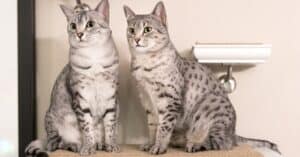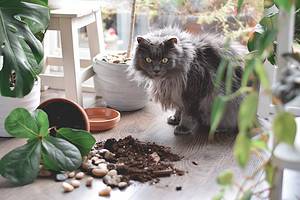Bengal cats remain one of the most popular breeds among cat lovers worldwide. Many people prefer them due to their wild looks yet loving personalities. The Bengal’s high energy makes them an exciting pet. Some Bengal owners take them on adventures such as hiking, kayaking, and more! Created by crossing the Asian leopard cat (ALC) with domestic cats back in the 1970s, the breed’s popularity only grows with time. Kittens progress quickly to adults and generally live long lives. Read on to discover everything about Bengal cats!
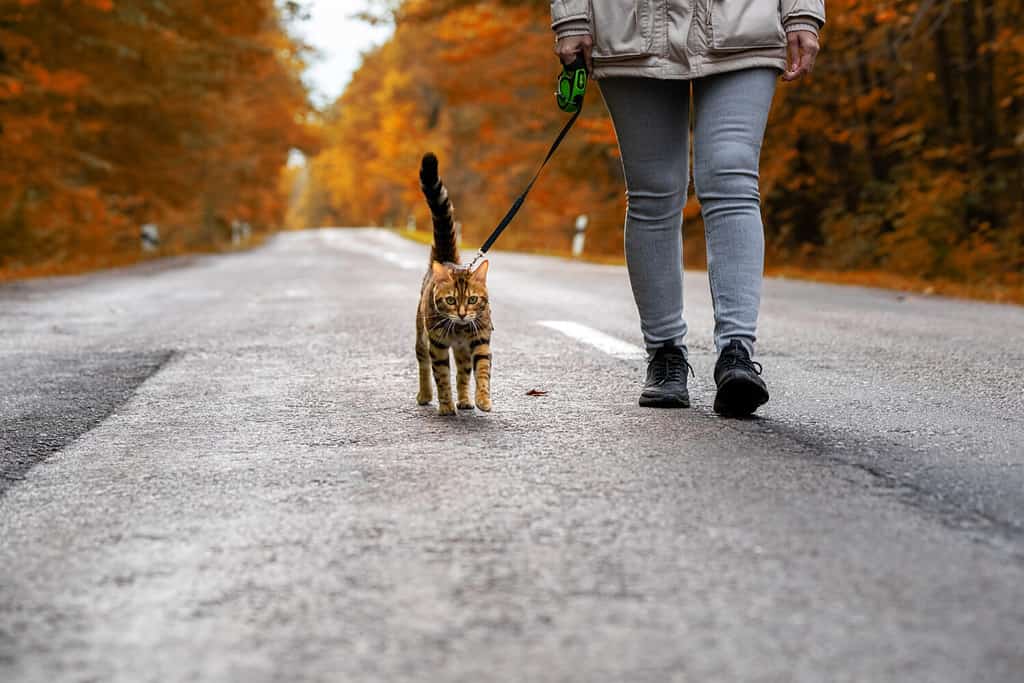
Bengal cats often enjoy adventures with their owners.
©Amerigo_images/Shutterstock.com
Bengal Cat Traits: What to Know Before You Buy
Before you buy or adopt a Bengal cat, several important things to know include the following.
- Bengals have lots of energy even into their adult and senior years. They require lots of interaction and play to keep them entertained. A bored Bengal easily becomes a destructive kitty. Consider the cost and space needed for a cat wheel and multiple climbing trees or platforms before you buy/adopt. These cats want to run, climb, and jump!
- Because of their wild cat ancestry, some Bengals may display more wild tendencies than others. This is especially true in early-generation (EG) Bengals (F1-G4). These traits can include urinating/defecating into water (such as toilet or bath), skittishness, hiding, refusal to be held, and more. These personality traits are called “throwbacks,” and being aware of them is essential. Be sure to ask what generation the Bengal you’re buying is and what to look out for.
- Thankfully, these beautiful cats are hypoallergenic for some people. Always be sure to meet a cat in person if you have cat allergies. This way, you can see if you are allergic to it or not. Some lines and pairing may cause more allergic reactions than others. Much of this depends on the cat’s coat type and how much self-grooming (licking) it does.
- Males tend to show more love and affection to their owners than females. When choosing male vs. female, be sure to check out the pros and cons of each! Males are more prone to heart disease, while females can develop a life-threatening condition (pyometra) if not spayed.
- Speaking of health problems, the list of Bengal cats’ concerns is pretty long. From hypertrophic cardiomyopathy to pyruvate kinase deficiency, researching Bengal-specific disease takes the number one spot in what you need to know! They may have an incredible lifespan, but it’s up to you to ensure they remain happy and healthy. Ask your breeder for all health testing done on your Bengal and its parents before committing to a purchase!
- Bengal cats come in a huge variety of colors and three different patterns. Some color/pattern combinations, such as charcoal blue spotted or melanistic snow, may be more expensive than others.
- This breed is famous for the close bonds they form with their human companions. Generally, they pick one person in the family to bond with. If you can’t spend much time at home or do not intend to keep a Bengal for its entire life, this isn’t the breed for you.
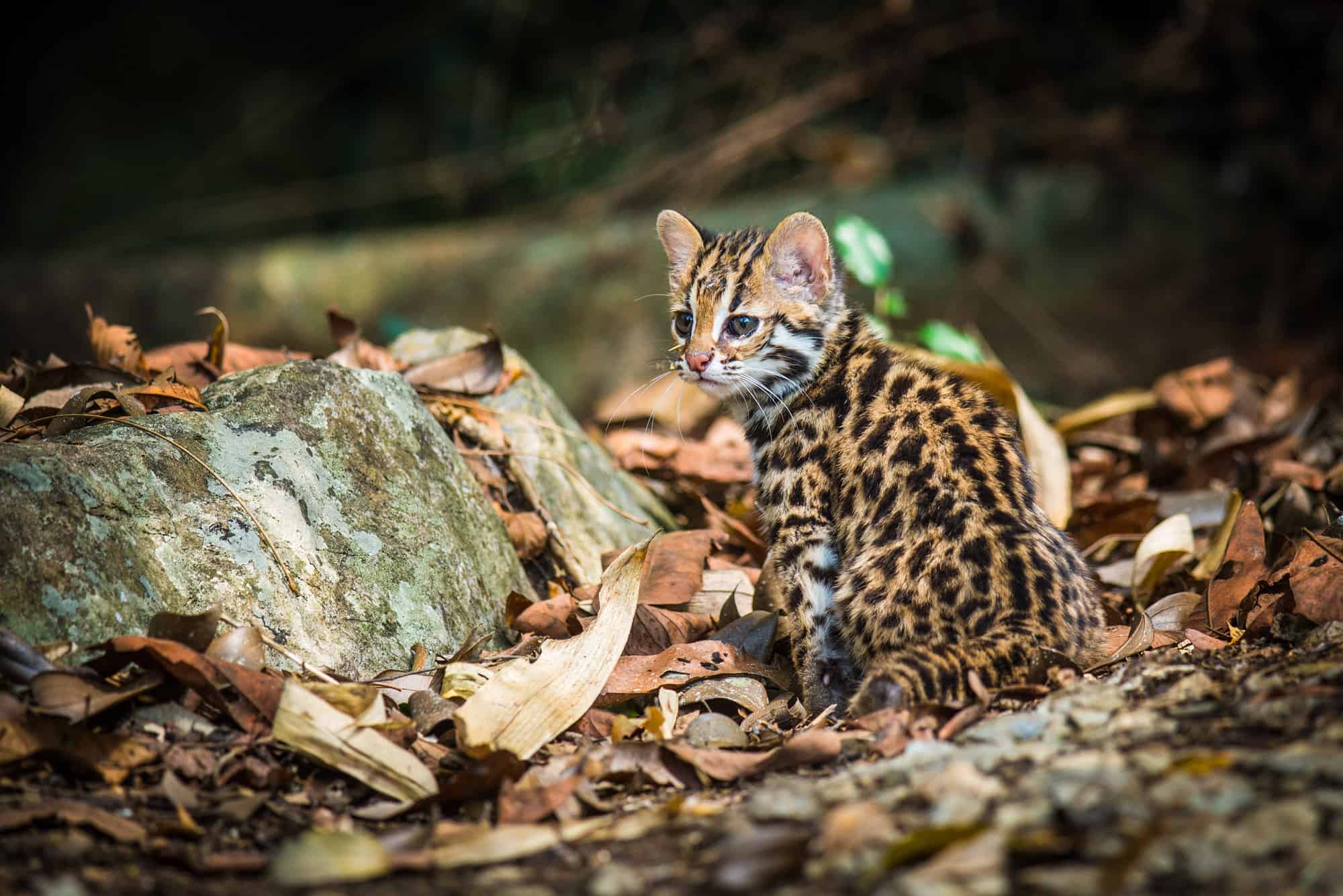
Bengals owe their spotted coats to the Asian
leopard
cat that Dr. Centerwall used to create them.
©WildWoodMan/Shutterstock.com
Bengal Breed History
The humble beginnings of the Bengal cat breed started when Dr. Willard Centerwall asked his children to assist him with a science project. He asked them to choose which pet they would like the most: a striped dog or a spotted cat. The family decided on the spotted cat, and away the project went. In reality, Dr. Centerwall had already begun his experiment. His intent? To create a domestic house cat with a wild look and immunity to feline leukemia virus (FeLV). Unfortunately, the latter half of his goal was never realized. The resulting kittens were not immune to FeLV like their wild ancestors, but they did possess beautiful spotted coats and significantly more tame personalities.
Then, in the 1980s, along came a woman named Jean Mill. She attempted to make the same hybrid cats as Dr. Centerwall back in 1963. She had long abandoned the project before reading an article entitled The Truth About Hybrids that Dr. Centerwall published in 1974. Someone showed her the article in 1981, and she set out to meet Dr. Centerwall and his cats. This created a wonderful friendship and partnership. When Dr. Centerwall retired from breeding the cats, he gave most of his stock to Mill.
From there, Mill created the famous Millwood Cattery. The name Millwood still shows up in pedigrees of Bengal cats birthed today. The Millwood and Centerwall cats were the foundation of the Bengal breed as we know it nowadays.
Health and Entertainment for Your Bengal Cat
See our product reviews for awesome toys and more for your Bengal cat!
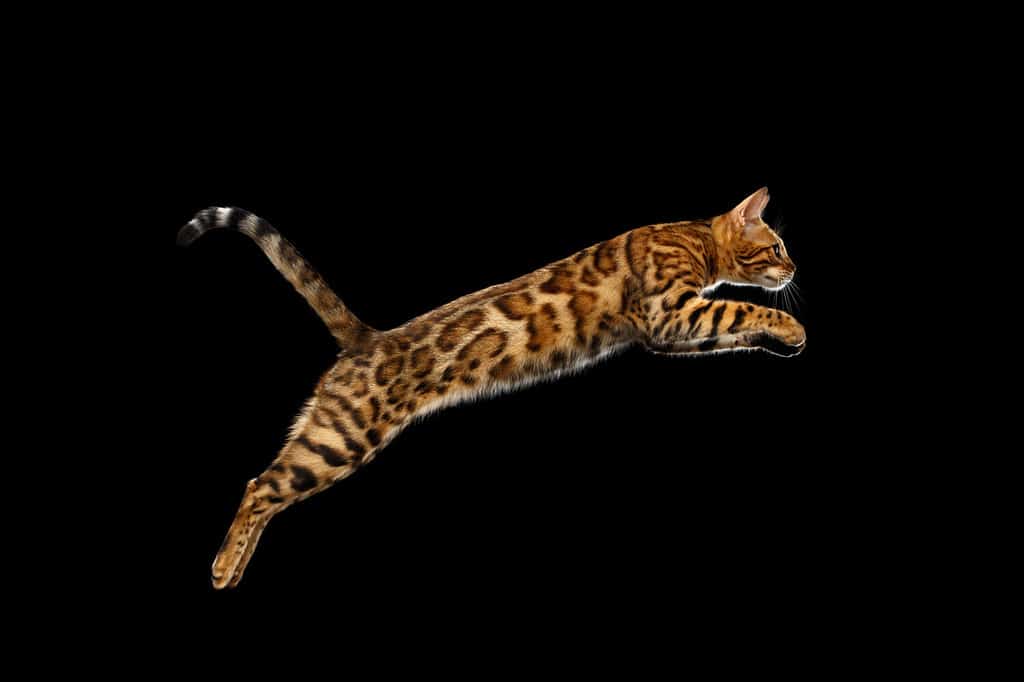
Extremely agile and athletic, Bengals require active play to remain happy and healthy.
©Seregraff/Shutterstock.com
Personality
The most important aspect of the Bengal cat’s personality is their high energy. Sometimes called wild and crazy, the Bengal cat is certainly an entertaining pet! They can jump several times their own body length and perform somersaults in the air to catch toys. Some Bengals learn to fetch, while others show their skills in feline agility courses. Others may enjoy walks, hikes, or even a boat ride with their family!
Another personality trait is how loving Bengals can be. While this may not be true for every specimen of the breed, most Bengal cats do not enjoy being picked up or held. They tend to choose to receive pets and snuggles only on their terms. Some like to snuggle in bed or on the couch, while others may prefer to watch you from a distance.
Lastly (and perhaps most famously), Bengal cats tend to be very vocal. They have a large range of different meows, chirps, purrs, and the like to communicate with their owners. Many Bengals seem to scold their owners when they arrive home after being gone for a while. It’s essential to remember this very social and talkative personality trait when considering bringing home a Bengal cat. Some people become very annoyed when the kitty cries too much or persistently meows for them to get up and play at 4 am!
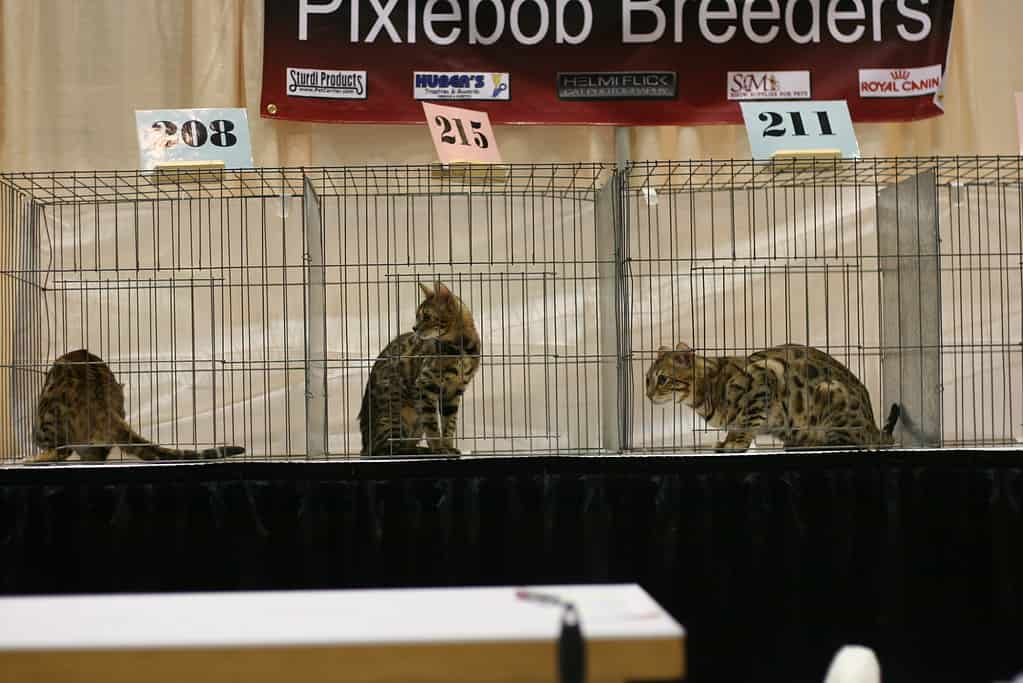
Male Bengal cats usually grow larger than females.
©A-Z-Animals.com/Rachael Monson / Nemera Bengals
Size and Weight
Bengal cats range in size from 6 to 22 lbs (pounds). Size and weight are affected by several things, including gender, genetics, and whether they are fixed (spayed/neutered). Males almost always outweigh females. They have larger frames and more muscular builds. Some females are quite dainty, though some also grow to considerable sizes. Much of the size and weight depends on which cats were bred selectively to create the kittens. If both parents are larger cats, you can expect your kitten to be bigger than others.
Another factor in size and weight is spaying and neutering. When a cat is fixed, the hormones that tell them to stop growing are eliminated. Generally, this results in a larger cat overall. However, it is extremely important to remember that spayed/neutered cats become at higher risk for obesity. Being overweight can lead to diabetes and joint problems as your cat ages.
Price
Pricing for Bengal cats and kittens varies greatly depending on age, color, pedigree, generation, and more. An adult cat will likely cost less than a kitten while a rare color cat will be more expensive. Cats and kittens from show lines that win lots of awards are often the most expensive. That’s because it takes hard work and dedication to show the cats and improve the breed. If you want the best of the best, choosing a breeder that shows their cats and proves them to be great examples of the breed is your best option.
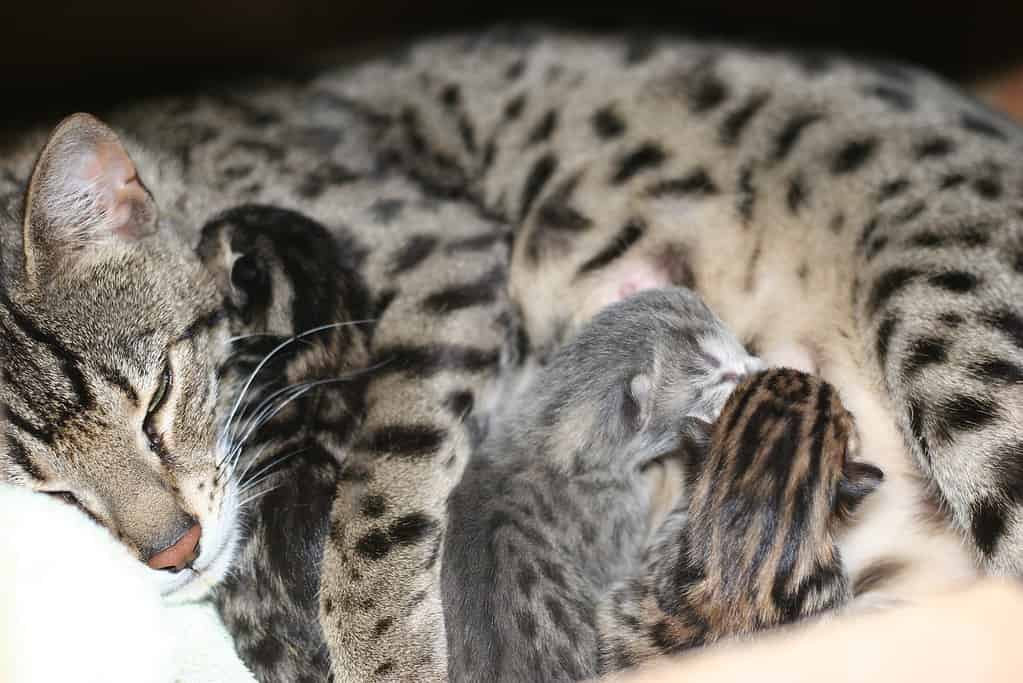
Mother Bengals snuggle their babies to keep them warm and allow them to nurse.
©A-Z-Animals.com/Rachael Monson / Nemera Bengals
Bengal Kittens
Buying a purebred Bengal kitten from a breeder typically costs anywhere from $800-5,000. If you purchase breeding rights, these numbers easily double. EG Bengal cats also cost more than those further removed from their ALC ancestors. That’s because EGs prove very difficult to breed. The mothers are much more sensitive to changes around their birthing den, and the litters tend to be much smaller.
Adopting an Adult Bengal
Bengal cat breeders regularly sell retired breeding cats that are already spayed/neutered and up to date on all vaccines for $100-800. Their goal is to find a wonderful retirement home for these cats who have worked so hard to further the breed and the breeder’s vision. Most retiring breeding Bengals are between 2 and 6 years old and still have plenty of life to live as a pampered pet!
Rescue
Another option is to adopt a Bengal cat from a shelter or other responsible rescue such as the Bengal Rescue Network. Keep in mind that a rescue Bengal may not have had the greatest life and may have trouble adjusting to your home. On the other hand, they may already have health or behavior concerns, which you must consider before making a decision to adopt.
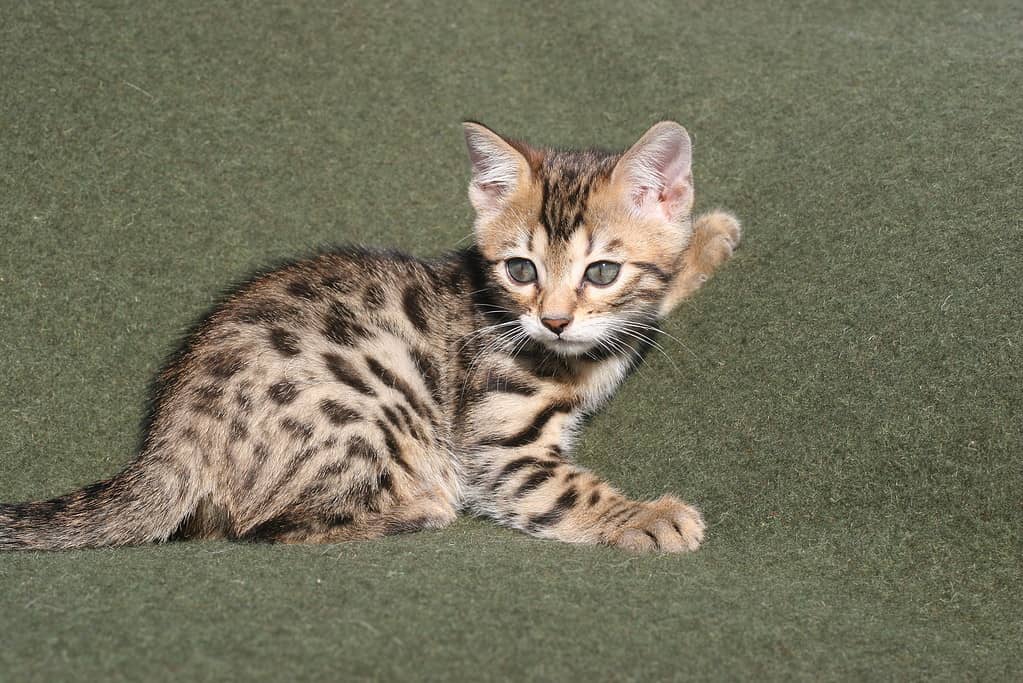
Two-month-old Bengal kittens should weigh about 2.5 to 3.5 pounds.
©A-Z-Animals.com/Rachael Monson / Nemera Bengals
Lifespan
Bengal cats typically have a long lifespan of 12–20 years. The kitten stage lasts for about the first year to 16 months. Once an adult, Bengal cats continue to display high energy and loving personalities. As they age into their senior years, the Bengal cat may slow down a bit and become more cuddly. Health conditions such as kidney disease are prevalent in cats over the age of 7 years, regardless of the breed. As cats age, they require more frequent veterinary visits to ensure they remain healthy. The best way to keep your Bengal cat around for a long time is to identify problems as early as possible!
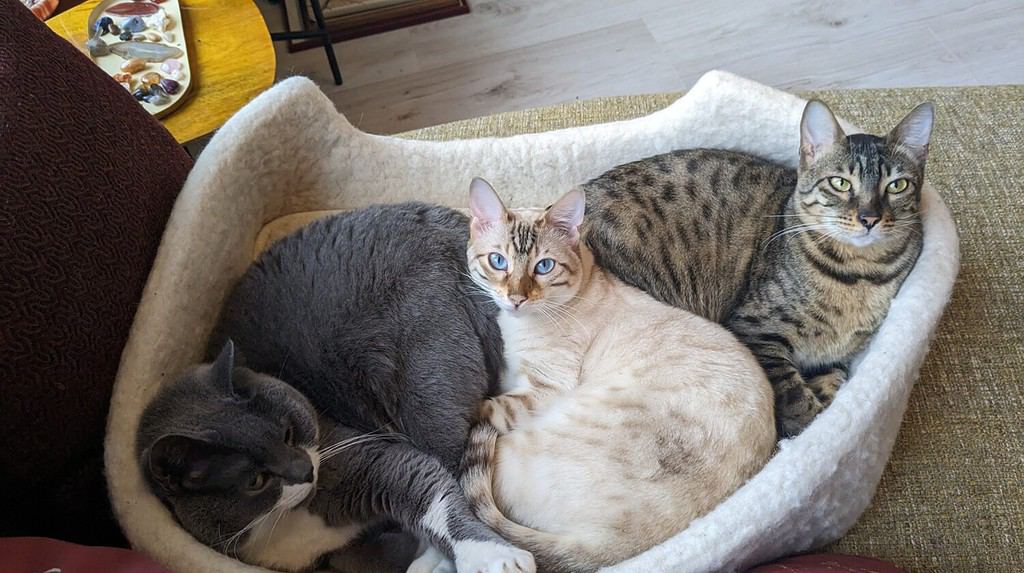
A Bengal mix may have some attributes of the Bengal breed including looks and personality.
©Arwen Matthijssen/Shutterstock.com
Breed vs. Mixed
This breed has a very specific breed standard with each purebred feline registry such as The International Cat Association (TICA) or The Cat Fancier’s Association (CFA). These registries publish guidelines for appearance, personality, and more. An important part of these rules is the forbidding of outcrossing. That means that the registries no longer accept non-Bengal crosses into the registry. Bengal mixes are not purebred. They cannot be shown, nor can they get papered.
Nevertheless, both accidental and intentional outcross breeding still occurs. The most common mix with Bengal cats is the domestic cat. These Bengal mixes likely display some personality and appearance similarities. However, some people do try to pass off mixes as purebred and sell them for vast amounts. Consider buying a cat DNA panel to determine if your cat is a purebred Bengal or a mix if you’re unsure of their history.
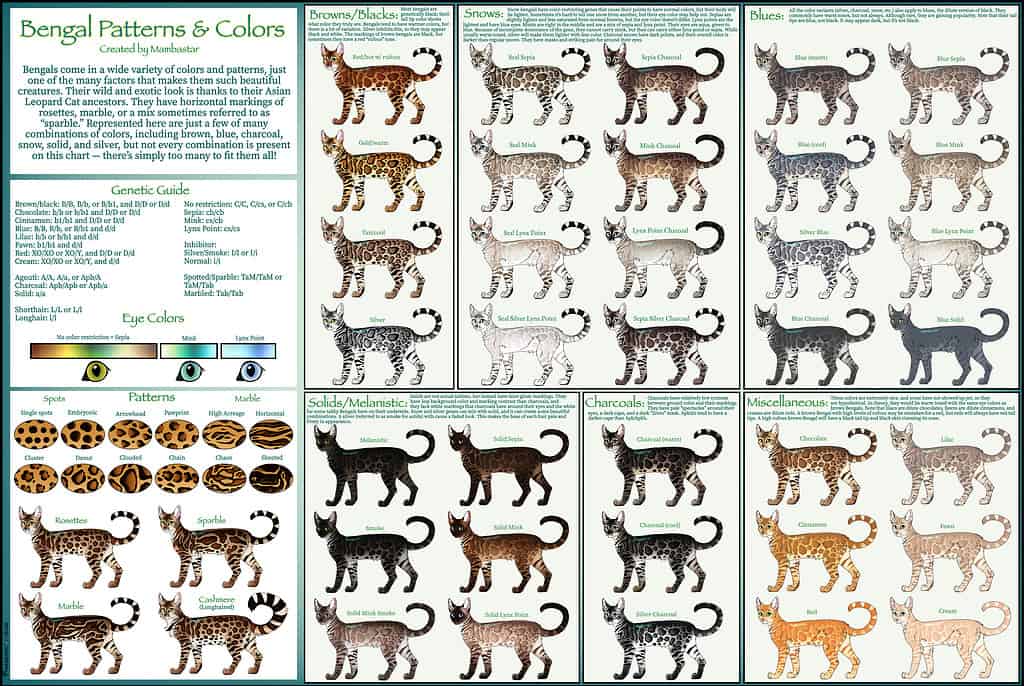
Bengal cats come in a huge variety of colors and patterns. This chart shows many of them in detail.
©Mambastar / DeviantArt – License
Types of Bengal Cats and Colors
Bengal cats come in a wide array of colors along with three recognized patterns. Patterns include spotted, marbled, and charcoal. There is some debate in the cat fancy as to whether charcoal is a pattern or a color, but most breeders and judges agree it is a pattern.
Patterns
- Spotted – Sometimes called broken classic tabby, this pattern consists of many spots or rosettes. The pattern flows horizontally along the trunk of the body. Spotted Bengal cats should have spotted legs. The spots should stand out from the background color with good contrast. Spots are solid colored, while rosettes have a darker outline and a lighter center. Rib bars occur when the spots run together vertically over the ribs, which is highly undesirable. Sometimes, spots or rosettes run together horizontally, which is called chaining. Chaining is acceptable in the Bengal cat.
- Marbled – This coat pattern consists of a swirling dark pattern that stands out from the background color. The marbling can be solid colored or have a darker outline with a lighter center, similar to rosettes. The most important part of the marble pattern is that it flows horizontally and does not form a bullseye (as seen in the classic tabby pattern).
- Charcoal – With a dark cape along the center of the back and a Zorro-like dark mask, the charcoal pattern can appear on either a spotted or marbled coat. This pattern generally causes darker overall coloration and reduced contrast. However, because pattern darkening occurs, many people love charcoal snow Bengals. This pattern makes the spots or marbling more pronounced on the white background.
Colors
- Brown – Also called brown (black) spotted/marbled tabby, this color is most common among Bengals. This color can appear light, sandy brown, or deep mahogany. The pattern is black, and the eyes are green or gold.
- Silver – Silver Bengals have one or two copies of the inhibitor gene. This is a dominant gene that causes the removal of all of the pigment of the background color. For brown Bengals, the background turns silvery-gray. In other colors, this gene is not as apparent, though it somewhat changes its appearance.
- Snow – Three types of snow Bengals exist: seal lynx point, seal mink, and seal sepia. Seal lynx point Bengals have naturally blue eyes and the lightest pattern. With their blue-green (aqua) eyes, mink Bengals sit right in the middle in terms of pattern contrast. Lastly, the seal sepia variety has green or gold eyes and the darkest pattern among snow Bengals.
- Blue – These special Bengals possess two copies of the dilution factor gene, which also occurs in dogs and horses. This causes all of the black and brown pigment within their skin and fur to become light grey-blue. Actually, it reduces the amount of pigment in the coat.
- Melanistic/Solid – These Bengals are called “self-colored.” That means their background and pattern are the same color. Interestingly, the pattern is usually still visible in certain lighting conditions.
- Miscellaneous – This category includes chocolate, lilac, cinnamon, fawn, red, torbie, and cream. Many of these colors are not accepted by registry associations. However, many breeders continue to experiment with adding new colors through outcrossing. These Bengals are incredibly rare; finding one at least four generations removed from the outcross is tricky.
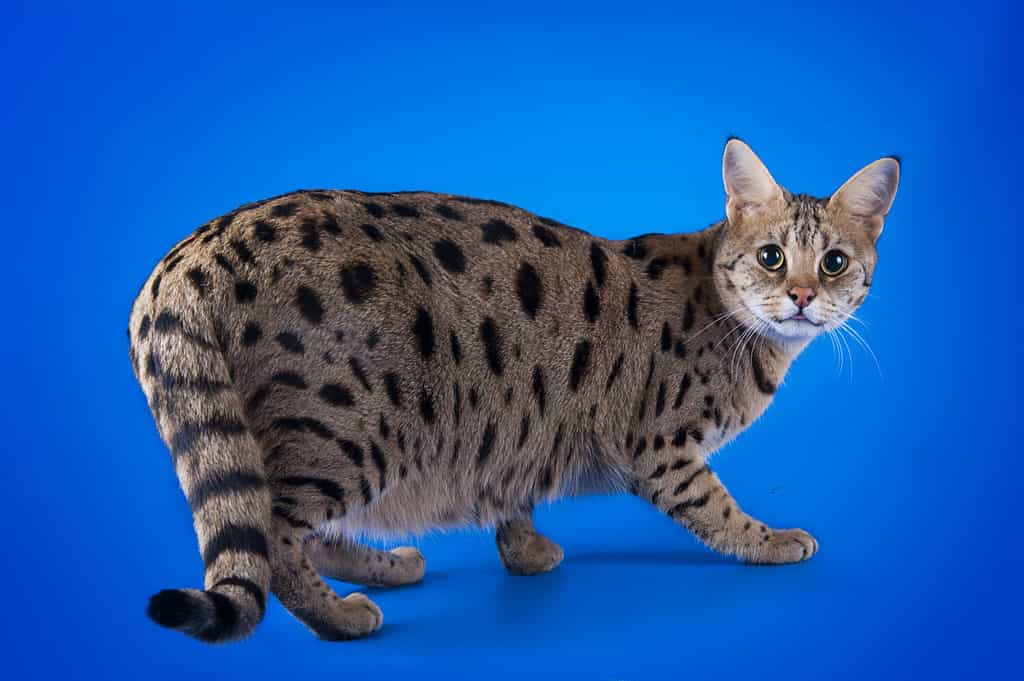
Savannah cats are much larger than Bengals and have very large ears.
©kuban_girl/Shutterstock.com
Bengal Cat vs. Savannah Cat
A common breed mistaken for a Bengal cat is the Savannah cat. With their similarly spotted pattern and wild ancestry, confusing the two is easy. Bengals are generally much smaller than Savannahs. They also have much smaller ears as Savannahs are bred to have large ears like an African serval. Lastly, Bengals have existed for longer than Savannahs and some were used in creating the newer breed.
The photo featured at the top of this post is ©
Thank you for reading! Have some feedback for us? Contact the AZ Animals editorial team.



